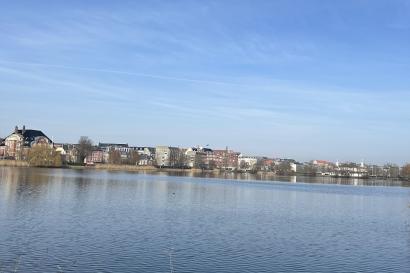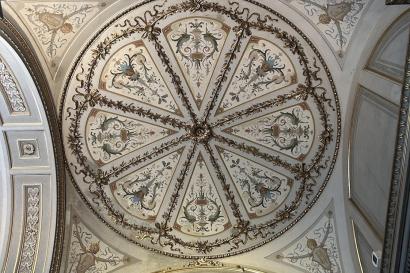The travels to Poland and Germany seemed like such a bubble. The trip allowed me to become even closer to a group of friends, our shared experiences in these new places allowed for the growth of friendship. Getting back to Vienna meant the start of classes; an event that led to distance between some of us as we focused on the schoolwork at hand.
Something that a student abroad should definitely expect is the difficulty of “finding time.” Finding time to continue to explore, to see new exhibits and old museums, historical landmarks and hidden treasures; eat more pastries, drink more coffee, absorb more and more. But with classes, it is a bit difficult to find the balance just yet, at least for me. School often makes me anxious, no matter where I am and no matter how old I may be. Even being a technical adult does not stop me from growing fearful of class presentations and German tests.
Despite this struggle of balance, I tried to go out by myself to find some parts of Vienna that I had never seen before; places not exactly the first on one’s list to view while here, not the tourist hot spot. Online I found a list of interesting pieces I’d like to see and so I set out onto the U4.
Getting off at Schottenring, I first came upon Philip Johnson’s Wiener Trio sculpture. Instantly striking to me was it’s location; placed between a heavy traffic road with stop lights and tram tracks. In order to get up close and personal I had to carefully maneuver this intersection. Drivers looked at me curiously as I took photos and tried to stay on the grass island. Unlike seen on the pictures online which showed the sculpture clean and new, there was now graffiti spattered all along the bottom of these contorted beams. One man's masterpiece is another man's scrap piece of paper, ripe for doodles.
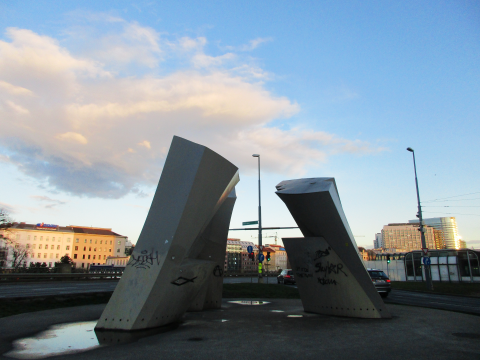

I then walked along the Donaukanal and took pictures of the plethora of graffiti. I didn’t finish walking along the kanal, but from my view it seemed never ending. I enjoyed the vibrancy and style that seemed to brighten what would have otherwise been grey stone walls devoid of emotion or meaning. I quick search online told me that this graffiti is in fact legal, which perhaps contributes to it bountifulness. I hate to say it, but I enjoyed looking all of this work tagged on walls, created by random strangers more than I enjoyed looking at the piece by Johnson. Where a piece like his may seem sterile, simple, and very deliberate; spraypainted pieces done in colors of neon green and pink seem exciting and sparratic. One was created as art; the other an expression of art. One would be viewed as something that should be viewed in a museum, while graffiti is just taken as the work of disruptive youths or artists who haven't "made it big" yet.
Below: A view of the Donaukanal
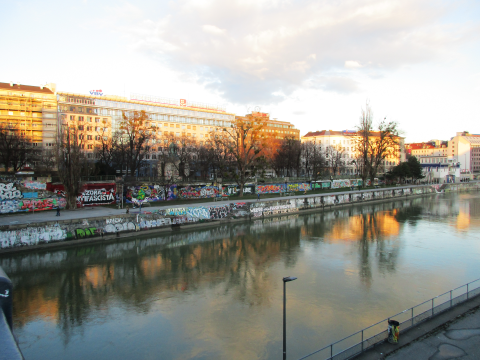
Below: A photogenic dog decided to photobomb my photo.
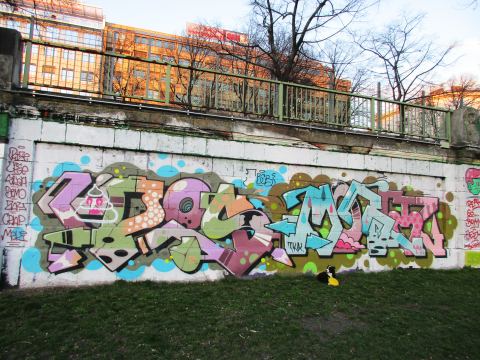
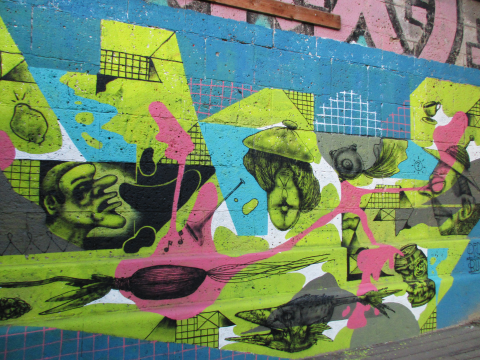
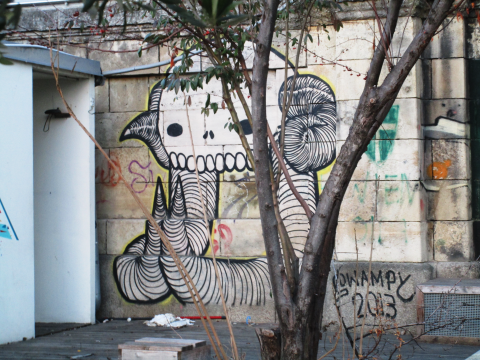
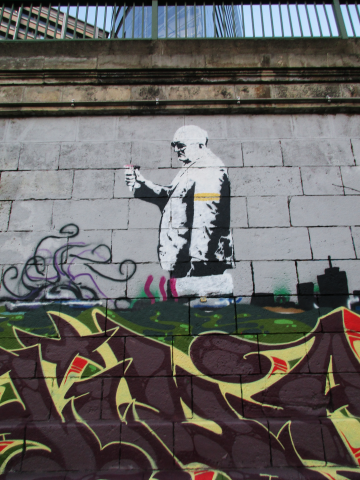
Next was the Tony Cragg Ferryman sculpture, at the Georg-Coch-Platz. The platz seemed to have become a popular place for young skaters to practice their skills. Trying to not get run over by a tween on a skateboard, I took a few shots of the piece, and was both amused and a bit disappointed to see the collection of trash inside the sculpture itself. Just like with the Wiener Trio sculpture, modern day people had interacted with it; changing it’s job from being a piece of art to that of a trash bin. I definitely think that there is a certain "danger" to putting art in the public; not everyone will understand it, and not everyone will respect it. I can't help but wonder what the creators of these pieces would think, knowing that a teenager named Skylar tagged their sculpture, or a skater tossed their leftover McDonalds in their handcrafted metalwork. Personally, I think there is something organic and interesting about this interaction between the average man and art. Does the opinion of one person influence the validity of a work of art?
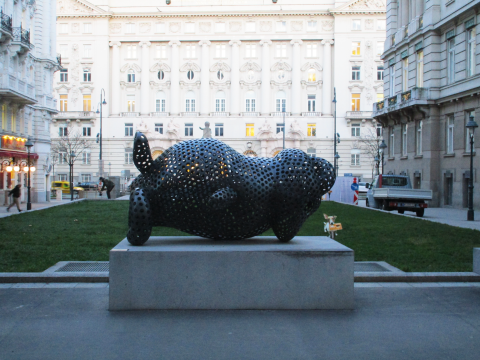
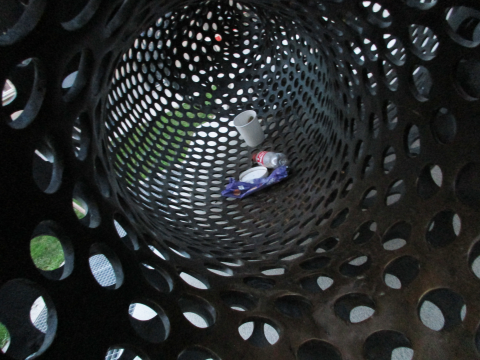
I set off to find the Memorial for the Austrian Jewish victims of Shoah by Rachel Whiteread, in Judenplatz. The sun was beginning to set and I couldn’t help but feel thankful for the safety of the city. Vienna was just named the most livable city in the world for the 7th year in a row; and so I felt comforted.
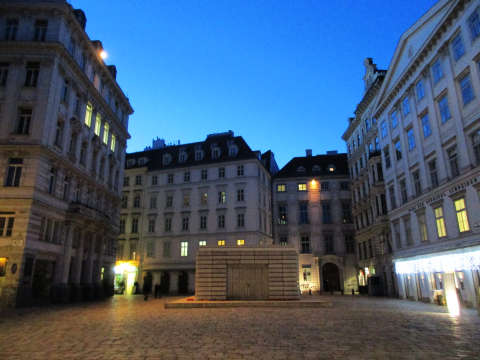
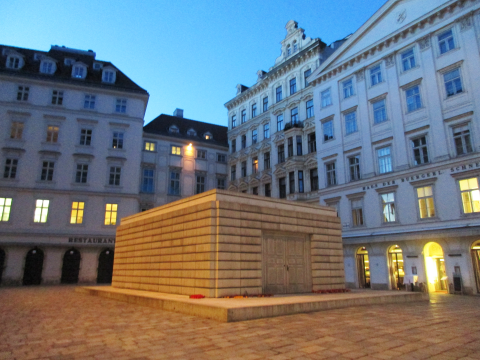
This memorial commemorates the 65,000 Viennese Jews that were murdered during the Nazi Regime. The shape is meant to represent a non-accessible library, filled with books about the victim’s life stories.
On the walk to the Albertina, I came to Am Hof square and was delighted to see Olafur Eliasson’s Yellow Fog Light Installation. I had previously believed I wouldn’t be able to see the piece due to it getting too late, but without even realizing it I walked right to it!
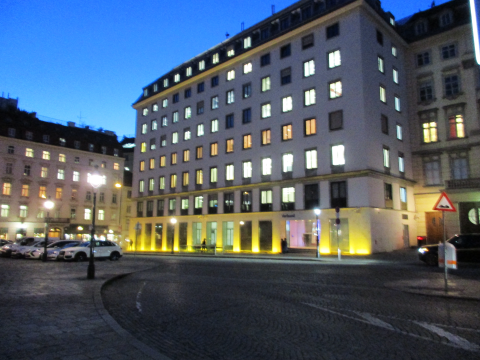
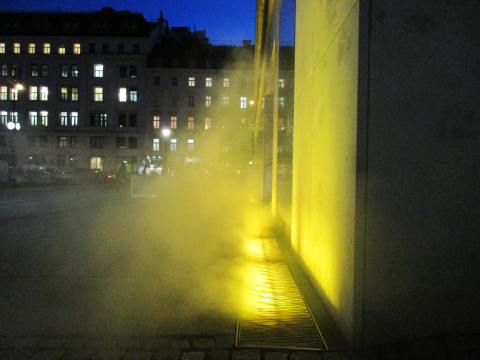
This installation is very interesting; yellow lights shine through a gutter along the façade of the Verbund-Zentrale while a fog is blown through the gutter. The effect is dreamy and bizarre at the same time. You wouldn’t expect to find it in the old city center. Best of all, this installation is only on for an hour during dusk each day, yet another reason I was so elated to get to it at exactly the right time.
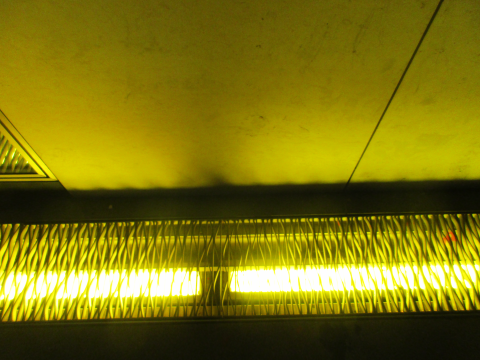
I walked to the outside of the Albertina, at the Helmut-Zilk-Platz/Albertinaplatz. Here was the Memorial against war and fascism by Alfred Hrdlicka. This area was once the site of Philipp-Hof, an apartment block that was destroyed by an air-raid on March 12th, 1945. Hundred s died during this attack.
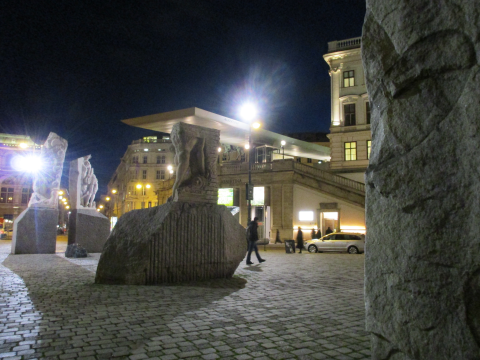
In the U-Bahn mezzanine’s, you can easily walk past a piece of art or instillation without even realizing it. For example, I consistently walk past the Kunstpassage Karlsplatz by Ernst Caramelle, a piece that was made in 2013.
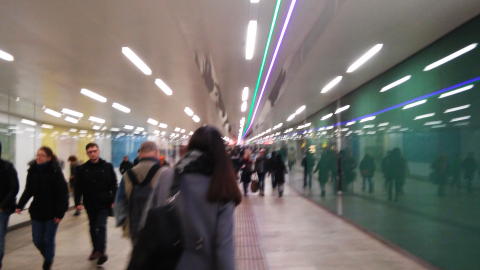
Another piece is seen between the U1 and U2 subway line, done by Peter Kogler. It is a graphic piece, meant to represent the traffic network.
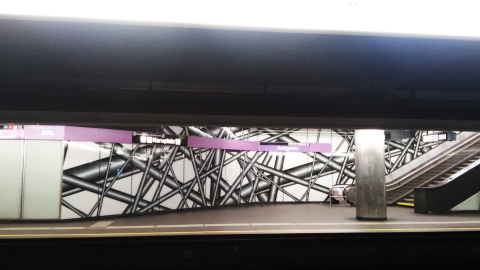
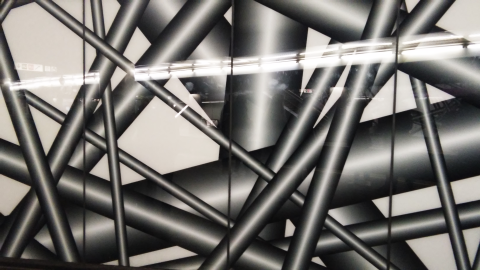
I really enjoyed exploring part of Vienna for an evening, to admire these works that are consistently briskly walked by without a second thought. No matter where you may study abroad or where you will travel, I think it is always worthwhile to go off on your own. Even better, to go find pieces you know will stimulate your mind, related to your passions or interests. It's important to take time to really contemplate the world around you, see how you percieve it, and determine why you feel the way you do. Corny as it may be, one really should take time to stop and smell the roses.

Selina Donahue
<p>Selina is a Junior Studio Art Major at the Catholic University of America in Washington, D.C. She enjoys long walks in the halls of art museums, eating too many cupcakes, and absorbing the world around her to feed as inspiration for all her creative endeavors. Her specialties lie in taking too many pictures and expressing joy over the little things. Selina is excited to share the beauty she sees all over Vienna during her stay with all who hop on over to her little blog!</p>



